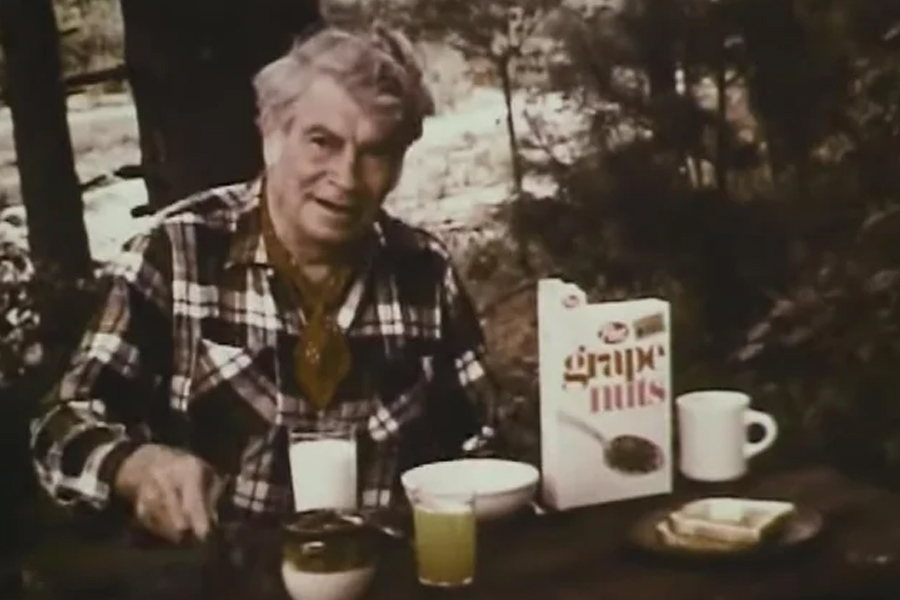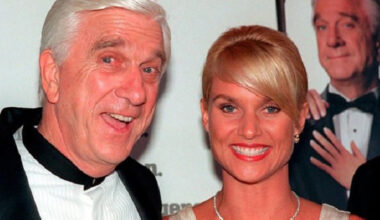Basic Information
| Field | Details |
|---|---|
| Full Name | Euell Theophilus Gibbons |
| Often Misremembered As | Yule Gibbons |
| Date of Birth | September 8, 1911 |
| Place of Birth | Clarksville, Texas, USA |
| Date of Death | December 29, 1975 |
| Place of Death | Sunbury, Pennsylvania, USA |
| Age at Death | 64 |
| Spouse | Freda Fryer (married 1948) |
| Children | One daughter (name not publicly disclosed) |
| Profession | Author, naturalist, foraging expert, health food advocate |
| Notable Affiliations | Quaker community |
| Signature Works | Stalking the Wild Asparagus (1962); other books on foraging |
| Known For | Popularizing wild foods, Grape-Nuts commercials, environmental consciousness |
Roots and Early Years
Euell Gibbons began as a child of the wide American landscape, born in 1911 in Clarksville, Texas. In the 1930s he crisscrossed the Southwest, working as a dairyman, carpenter, and cowboy—hands-on trades that fostered an eye for the practical and an appreciation for the raw materials of life. These years were a crucible where self-reliance and curiosity fused; the desert’s sparse blooms and the ranch’s humble pantry taught him the value of knowing what the land offered, season by season.
During the 1940s, amid global upheaval, Gibbons served in the U.S. Army. His postwar trajectory was not toward celebrity but toward a deeper, quieter understanding of nature and nourishment. That sense of groundedness—earned through weathered labor and miles on dusty roads—would later form the moral and culinary backbone of his writing and advocacy.
Marriage, Teaching, and the Quaker Turn
In 1948, Gibbons married Freda Fryer, a schoolteacher whose steady presence and intellectual curiosity matched his own. Together they moved to Maui, where they taught until 1953, lending their talents to classrooms shaped by the ocean’s horizon. Teaching sharpened Gibbons’ skill for clear explanation; the same voice that helped students grasp concepts would later help readers identify plants and turn wild harvests into supper.
The couple’s spiritual path led them to the Religious Society of Friends. Joining the Quakers informed the next chapter of their life, emphasizing simplicity, stewardship, and community. Leaving Hawaii, they taught at several institutions before settling in Pennsylvania, where their commitment to Quaker life deepened. There, Gibbons’ philosophy took root: food as fellowship, nature as neighbor, and knowledge as a gift to be shared.
Books, Broadcasts, and the Forager’s Voice
In 1962, Gibbons published Stalking the Wild Asparagus. The book sold over 500,000 copies, a remarkable number for a guide to wild foods. It introduced foraging as both practical skill and joyful discovery, combining precise identification with recipes and stories. He followed with other volumes—each one a field guide, kitchen companion, and quiet manifesto—extending a hand to readers curious about dandelion greens, cattail shoots, and beach plums.
By the 1970s, his voice had reached mainstream America through television commercials. As a spokesperson for Post Grape-Nuts cereal, Gibbons made himself unmistakable with a question that sounded like a riddle from the woods: “Did you ever eat a pine tree?” He didn’t mean gnawing bark. He meant edible parts—nutritious needles steeped as tea, pollen, and the rich, resinous tastes that speak of survival and tradition. The ads gave him national recognition; the books gave him lasting influence.
| Selected Works | Year | Notes |
|---|---|---|
| Stalking the Wild Asparagus | 1962 | Landmark book that popularized foraging; 500,000+ copies sold |
| Follow-up foraging titles | 1960s–1970s | Expanded the repertoire of wild plants and kitchen techniques |
| Articles in major magazines | 1960s–1970s | Essays on nature, food, and practical ecology |
Beyond books, Gibbons contributed articles to widely read publications, demystifying wild plants and turning foraging into a gateway to better health and deeper respect for ecosystems. His prose was crisp, his instructions meticulous, and his ethos nonjudgmental: start where you are, look carefully, and taste the seasons without waste.
Family Threads and Private Life
Gibbons’ marriage to Freda Fryer was a partnership aligned with the rhythms of learning and nature. Their shared years in Hawaii and Pennsylvania reveal a pattern: places chosen for community, quiet work, and natural beauty. They had one daughter, whose name remains out of public view, a deliberate privacy that mirrors the family’s unassuming approach to fame. Even as Gibbons stepped into the spotlight, he kept a circle of domestic life that valued simplicity over spectacle.
Their Pennsylvania home became a locus of teaching, Quaker practice, and kitchen experiments. Many of Gibbons’ methods—drying fruits, fermenting, simmering teas—unfolded as family rituals. Through this lens, his legacy is as much about a household practice of mindful living as it is about national recognition.
| Family Milestones | Date | Place |
|---|---|---|
| Marriage to Freda Fryer | 1948 | — |
| Teaching in Maui | 1948–1953 | Hawaii |
| Joining Quaker Community | Early 1950s | — |
| Settling in Pennsylvania | Mid-1950s onward | Sunbury area |
Health, Final Years, and Enduring Legacy
In later years, Gibbons continued to write, teach, and advocate for foods that come from hedgerows, shorelines, and the overlooked corners of fields. He believed in nutrition as common sense: eat close to the source, waste little, and learn the names of things. On December 29, 1975, he died in Sunbury, Pennsylvania, at age 64, due to a ruptured aortic aneurysm.
His financial life was modest by design. While his book sales and public appearances brought income and recognition, he never posed as a guru of wealth. The value he offered was a different currency: knowledge, independence, and the calm confidence of a person who can make a meal from a meadow. Today, his name evokes the quiet revolution that put wild foods at the center of American kitchen curiosity—more than a fad, a philosophy of stewardship.
| Career Milestones | Year | Impact |
|---|---|---|
| First major book published | 1962 | Established foraging as mainstream interest |
| National ad campaigns | 1970s | Brought wild foods and simple eating to TV audiences |
| Ongoing writing and teaching | 1960s–1975 | Built a practical canon of edible wild plants |
Influence on Modern Foraging and Environmental Thought
Gibbons helped transform the way people see landscapes—no longer as passive scenery, but as living pantries filled with flavors, textures, and stories. His approach blended taxonomy with taste, botany with bread-making. He showed that learning a plant’s Latin name is not enough; one must understand its season, how it responds to rain, what part to harvest, and how to cook it without losing its character.
He also modeled a way of living that feels prescient today: eat locally, respect habitats, and linger a little longer over the smell of a spruce branch. In a world that prizes speed and scale, his counsel reads like a slow river—patient, reliable, full of small eddies where meaning collects. Many contemporary foragers and chefs cite Gibbons as a touchstone, the voice that first told them the forest is not just a place to walk but to taste.
FAQ
Who was Yule Gibbons?
“Yule Gibbons” commonly refers to Euell Gibbons, an American author and naturalist who popularized foraging and wild foods in the 1960s and 1970s.
How do you pronounce his name?
Euell is typically pronounced “YOO-ell.”
What was Euell Gibbons best known for?
He was best known for his book Stalking the Wild Asparagus (1962) and for TV commercials promoting Grape-Nuts cereal.
Did he really eat pine trees?
He explored edible parts of pine—such as needles for tea and pollen—highlighting their nutritional and culinary uses.
Was Euell Gibbons a Quaker?
Yes, he and his wife joined the Quaker community in the early 1950s and remained active in Pennsylvania.
When did he marry, and did he have children?
He married Freda Fryer in 1948, and together they had one daughter whose name is not publicly disclosed.
Where did he live later in life?
He settled in Pennsylvania, where he wrote, taught, and participated in Quaker life.
How and when did he die?
He died on December 29, 1975, at age 64, due to a ruptured aortic aneurysm.
How successful were his books?
Stalking the Wild Asparagus sold over 500,000 copies and remains a cornerstone of modern foraging literature.
Was he wealthy from his work?
His earnings suggested moderate financial success, but his lifestyle emphasized simplicity and stewardship over wealth.



